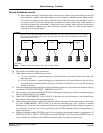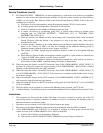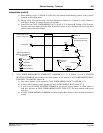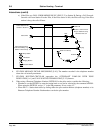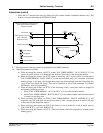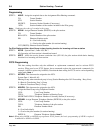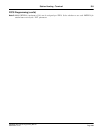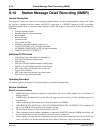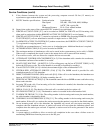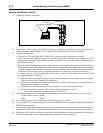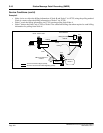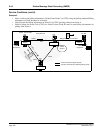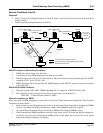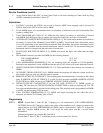
NEAX2400 IPX Feature Programming Manual
NDA-24297, Issue 1
Page 671
Station Message Detail Recording (SMDR) S-10
Service Conditions (cont’d)
8. If the distance between the system and the processing computer exceeds 50 feet (15 meters), an
asynchronous-type modem should be used.
9. RS232C Interface specifications: Synchronization Asynchronous
Data Speed 300, 600, 1200, 2400, 4800, 9600bps
Code ASCII 7-Bit + parity Bit
Maximum Distance 50 ft. (15m) without modem
10. Supervision on the status of the external RS232C terminal is not performed.
11. FORCED ACCOUNT CODE [F-7] can be recorded on SMDR, for INWATS and CO incoming calls,
when used in conjunction with the REMOTE ACCESS TO SYSTEM [R-2] service feature.
12. FORCED ACCOUNT CODE [F-7] cannot be registered on SMDR if the incoming REMOTE ACCESS
TO SYSTEM [R-2] calls are terminated to stations via night service or DID [D-8].
13. For REMOTE ACCESS TO SYSTEM [R-2] tandem connections, the FORCED ACCOUNT CODE [F-
7] is registered for outgoing trunks only.
14. The PBX can accommodate up to 7 active ports or 4 redundant ports. Additional hardware is required.
15. AUTHORIZATION CODE [A-20] can be recorded on SMDR.
16. The maximum number of simultaneous calls can be stored in the system memory (active calls) is 28,000.
When a call is completed, the record is sent to the output device and is removed from memory.
17. If an overflow occurs, calls are allowed to complete and are not recorded.
18. ATTENDANT-CONTROLLED CONFERENCE [A-2]: If the Attendant adds a trunk to the conference,
the Attendant conference line terminal is recorded.
19. LEAST COST ROUTING - 3/6-DIGIT [L-5]: The calling party can dial an ACCOUNT CODE [A-18]
before the LCR access code. The called number is recorded (as modified for sending).
20. If an ACCOUNT CODE [A-18] is dialed, the maximum digits of the called number is 22.
21. CENTRALIZED ATTENDANT SERVICE (CAS) [C-20]: The SMDR record is provided for calls
extended outward by a CAS Attendant.
22. DIRECT INWARD DIALING (DID) trunk calls [D-8]: If the call is to the Attendant, the Attendant can
input an ACCOUNT CODE [A-18] before extending the call.
23. INDIVIDUAL TRUNK ACCESS [I-4]: The Attendant cannot dial in an SMDR account code before using
direct trunk selection.
24. Incoming TIE trunk calls: If an incoming call to the Attendant is extended, the Attendant can input an
ACCOUNT CODE [A-18].
25. SERIAL CALL [S-15]: The duration of the total call is recorded on the last station call.
26. STATION HUNTING [S-7, 8, 9]: The hunted-to station is recorded in the called number field.
27. TANDEM TIE TRUNK [T-1] Calls: The calling number is the incoming trunk route plus trunk number;
the called number is the number dialed.
28. UNIFORM CALL DISTRIBUTION (UCD) [U-1]: The calling number is the incoming trunk route plus
trunk number. If the call is to a station, the station answering the number is recorded as the dialed number.
29. On an incoming trunk call to the Attendant, the Attendant call record will start upon answering and
complete when the Attendant releases. A station call record will start when the Attendant releases and
complete when the station goes on-hook. If required, a station record will not be generated if the station
does not answer.
30. A system option is available to allow or restrict call completion in the case where a failure occurs in
transmitting SMDR data from the processor to the I/O port.



